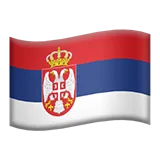In our previous article about product research, we mentioned our favorite combination of research practices: NPS —> in-depth interview —> SCI. It works great for small and medium-sized product teams, as it’s fast and easy to set up. Let’s discuss the first element of the chain, the NPS (Net Promoter Score).

NPS is an incredibly simple research tool; it consists of just one question: “On a scale of 0 to 10, how likely are you to recommend our business to a friend or colleague? Despite its simplicity, the results are often misunderstood. Paulina Bynova, JetStyle’s CMO, shares some valuable insights about how to use it for your benefit:
- Results of NPS are relevant only when processed continuously.
One static number says nothing about your audience’s attitude toward the product. The best approach is to measure NPS in various audience groups, in different periods. If it grows, then you’re doing well. If it declines, you should find the problem.
- The quality of the sample matters.
I’ve witnessed situations when the NPS poll emerged after communication with tech support managers. Why would anyone research unhappy users (we suppose they are unhappy because they had to contact support)? The best idea is to research on different segments of the audience separately or ensure the representative sample.
- Timing is key.
Think of the best time to ask your clients about their opinion of the product. For example, it could be after they perform a target action, e.g. ordered your service. At the same time, don’t forget to collect the opinions of those who only use your free version as well.
The most frequent mistake here is to send the NPS survey right after registration or during onboarding. If your product has a long life cycle, take your time and let your customers get enough experience with the product.
Be careful about how often you send out the survey. If you survey the same users too often, don’t be surprised they are increasingly unhappier each time you contact them.
After you get your NPS results, you need to understand your next steps. How does your product benefit from this research?
Apparently, the next step is to figure out why the NPS is low, or what you could do to improve it. What problems motivate your users to give you low scores?
Apart from the main indicator you get after the research, you have access to all users IDs and the scores they gave your product. You may use the data to launch a series of in-depth interviews; this is the next stage of our research flow for product teams. We’ll cover it in our next article. To be continued!








